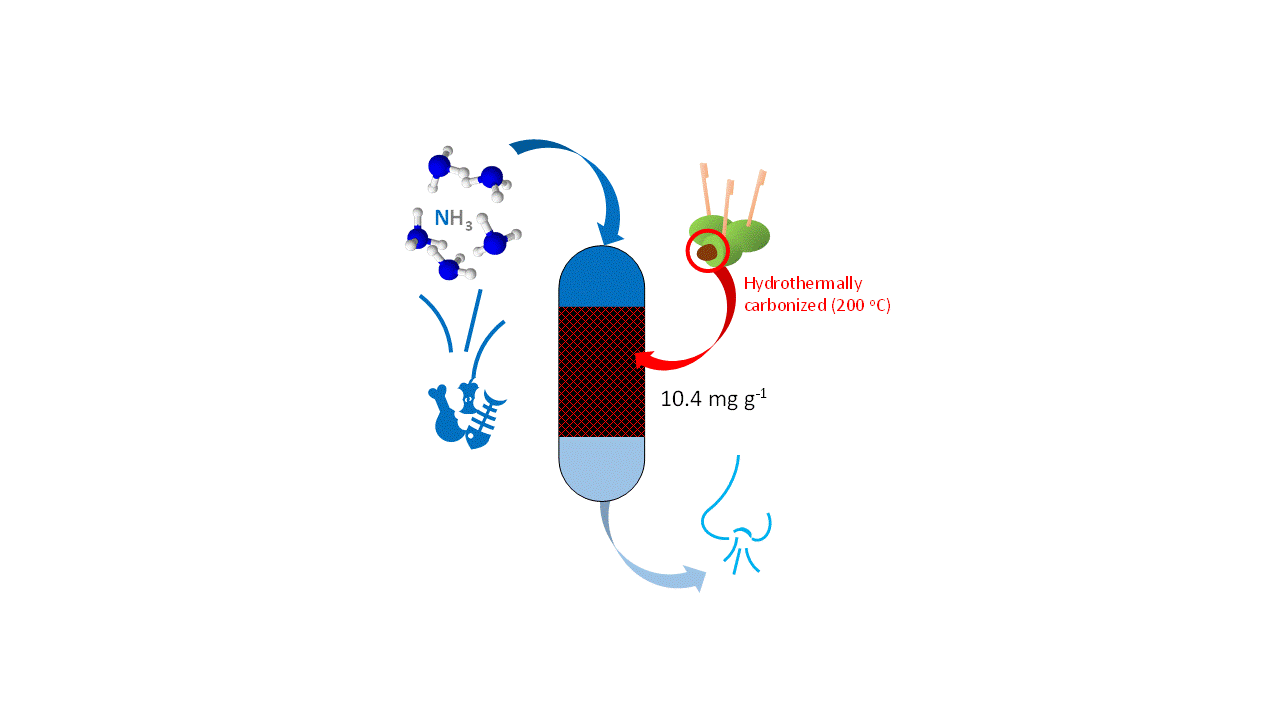
Landfill facilities and organic waste treatment plants typically are known sources of odour pollution, such as gaseous NH3, among others. In this work, the removal of gaseous NH3 released from a composting line of a mechanical and biological treatment plant of undifferentiated municipal solid waste was assessed in a fixed-bed column loaded with carbon-based adsorbents (CBAs) prepared from olive stone and malt bagasse as carbon precursors. CBAs were prepared by hydrothermal carbonization (HTC) assisted by H2SO4 and pyrolysis, resulting in materials with different physical and chemical properties. The hydrochar derived from olive stone by H2SO4-assisted HTC was found as the best adsorbent for NH3 removal (10.4 mg g-1). This result was ascribed to the high acid character of the adsorbent (2.34 mmol g-1), since it was found that acidity contributed significantly more than the specific surface of the adsorbents for the removal of NH3 (BET surface of 4 m2 g-1 was obtained for the CBA with the highest uptake capacity, whereas other adsorbents reach values of 172 m2 g-1 and NH3 uptake capacities of 0.07 mg g-1). The NH3-saturated hydrochar was regenerated by washing with water and subsequently reused in the adsorption of NH3, with a performance more than 70% compared to its first use.
Total file downloads: 22